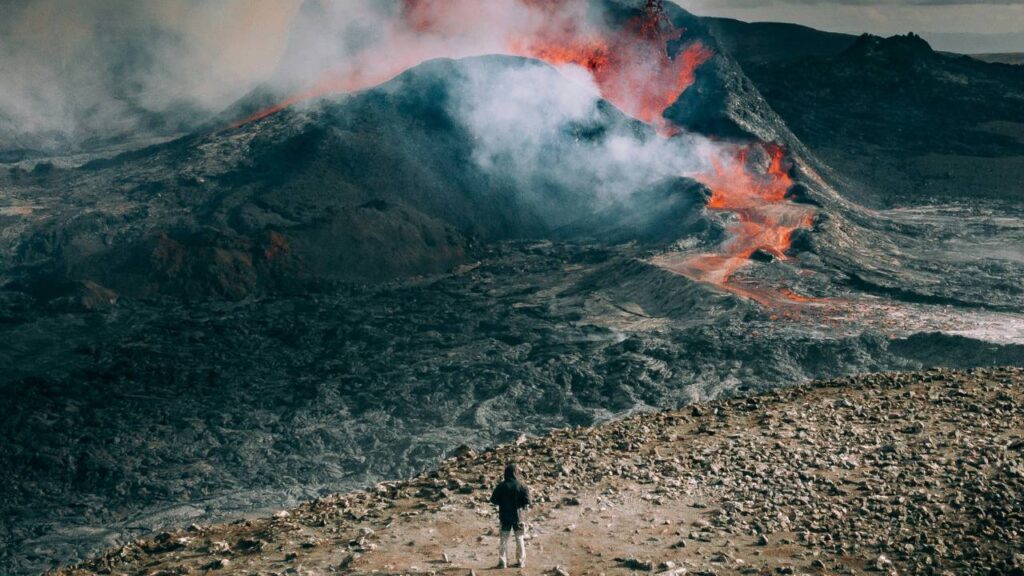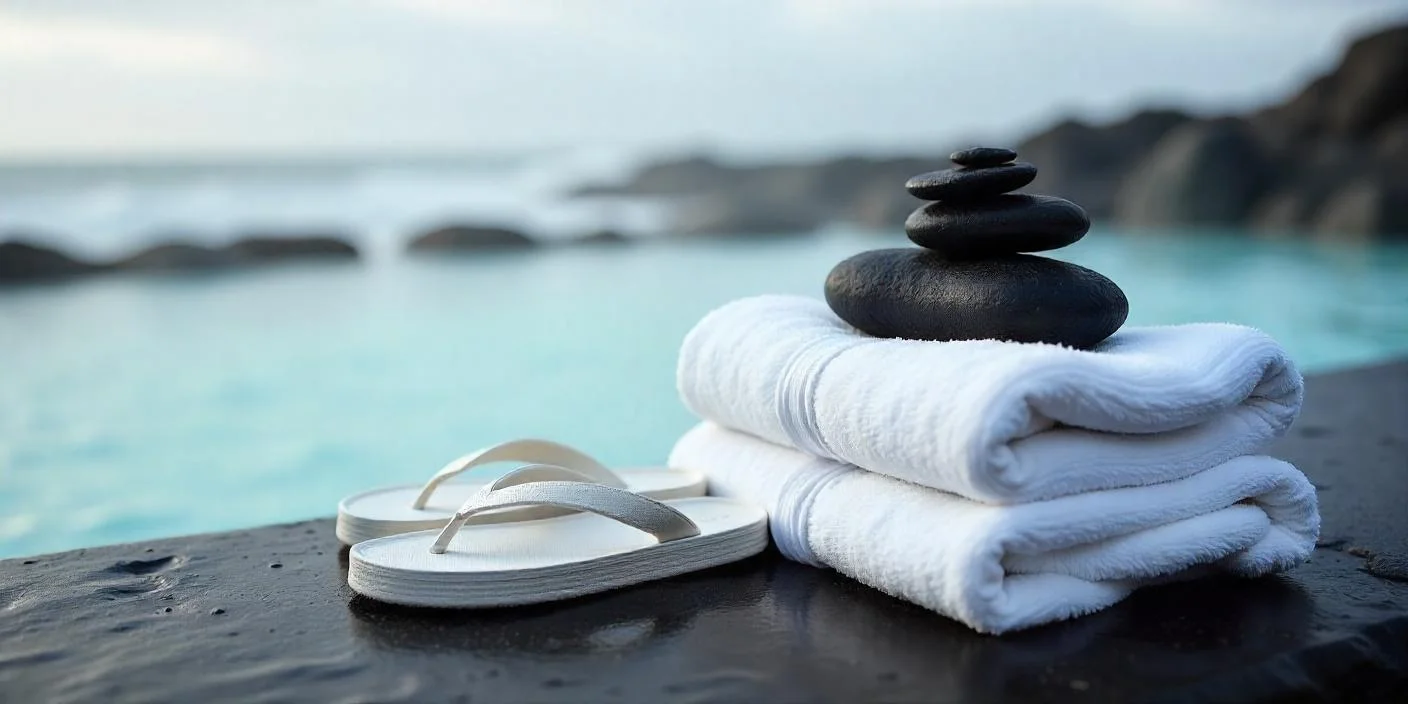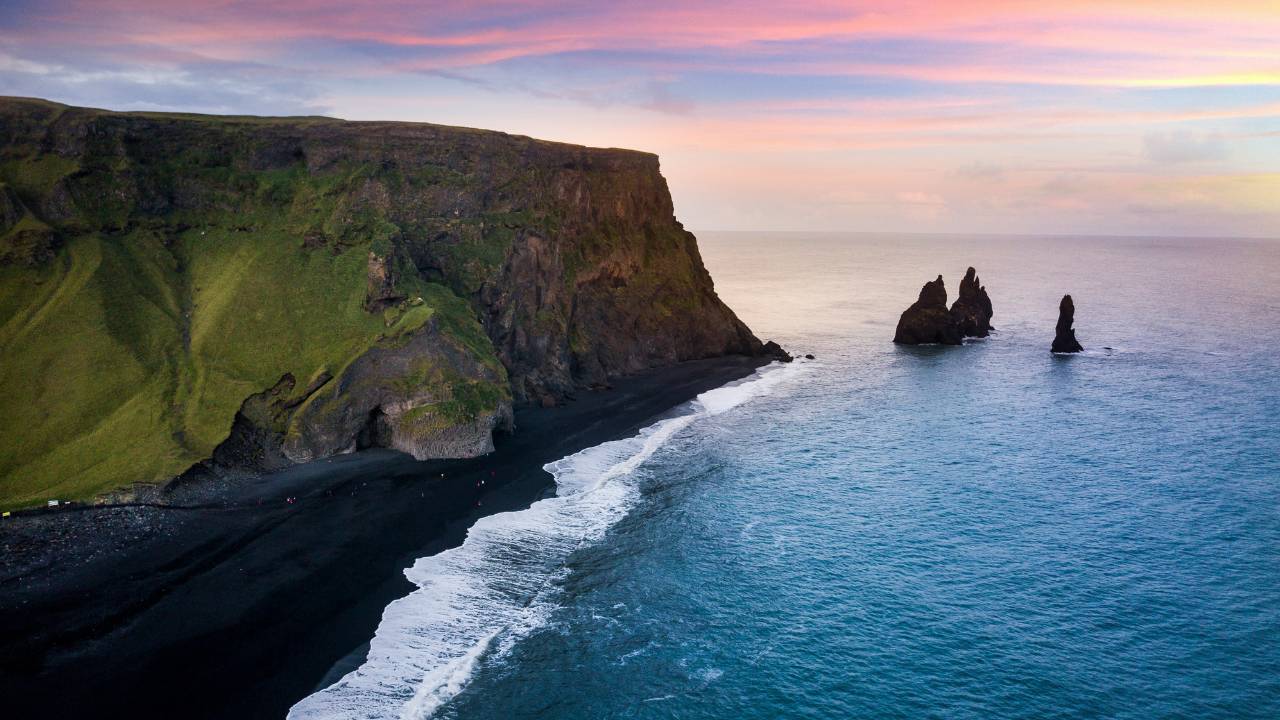Iceland’s volcanoes are one of the biggest draws to the country, and it’s no wonder why.
Iceland is a land of stark contrasts where fire meets ice, creating a landscape unlike any other on the planet. Your journey into the heart of Iceland’s volcanic regions will reveal the raw and dynamic processes that shape our Earth. From the towering, snow-capped peaks to the bubbling geothermal valleys, each volcano tells a story of eruptions past and the relentless forces of nature that continue to mould this rugged island.
As you explore these geological wonders, you’ll find that Iceland is home to some of the most accessible and diverse volcanoes in the world. Whether you’re marvelling at the majesty of Eyjafjallajökull, whose 2010 eruption captured the world’s attention, or trekking through the lava fields of the serene and slumbering Snæfellsjökull, the experience is bound to be both enlightening and exhilarating.
The stories of this land are deeply entwined with its fiery heart, and the volcanoes of Iceland offer a unique opportunity to understand the power and beauty of the natural world. With every geyser, hot spring, and fissure you encounter, you bear witness to the ongoing dance of creation and destruction that has been occurring for millennia. Prepare to be captivated by the sheer force and splendour of Iceland’s volcanic landscape.
Exploring Iceland’s Volcanic Landscape
When you journey across Iceland, you’re traversing a unique terrain shaped by the raw power of the Earth’s internal forces. Here, you’ll experience first-hand the dramatic interaction between the North American and Eurasian tectonic plates.
Land of Fire and Ice
Iceland is often referred to as the “Land of Fire and Ice” due to its remarkable juxtaposition of glacial ice caps and fiery volcanic activity. This natural wonder is grounded in the island nation’s position on the Mid-Atlantic Ridge, where these two contrasting worlds spectacularly collide. As you explore Iceland’s landscape, you’ll notice magnificent glaciers and steaming fumaroles side by side, both a testament to the island’s ongoing creation and transformation.
Major Volcanic Zones
Iceland’s volcanic terrain is divided into several key zones:
- The Reykjanes Peninsula: Known for its lava fields and geothermal activity, this area includes the famous Blue Lagoon.
- The West Volcanic Zone: Home to Snæfellsjökull glacier and the picturesque Snæfellsnes Peninsula with its iconic stratovolcano.
- The East Volcanic Zone: Encompassing the captivating Vatnajökull glacier and multiple active volcanic systems beneath its ice.
These zones are part of the dynamic boundary between tectonic plates, which fosters Iceland’s high volcanic activity.
Volcanic Systems and Ridges
Iceland boasts numerous volcanic systems and ridges, some famously active:
- Eyjafjallajökull: Best known for its 2010 eruption that disrupted global air travel.
- Katla: A potent volcano hidden beneath Mýrdalsjökull ice cap, closely monitored due to its history of explosive eruptions.
- Hekla: Often called “The Gateway to Hell” in ancient times, Hekla is one of Iceland’s most active and varied volcanic areas.
As you trek across the landscape, you observe the incredible mid-ocean ridge running through the island. This ridge is part of the Mid-Atlantic Ridge, where the North American and Eurasian plates slowly diverge, creating new land and building upon the already dramatic scenery of this unparalleled volcanic island.
Understanding Volcanic Activity
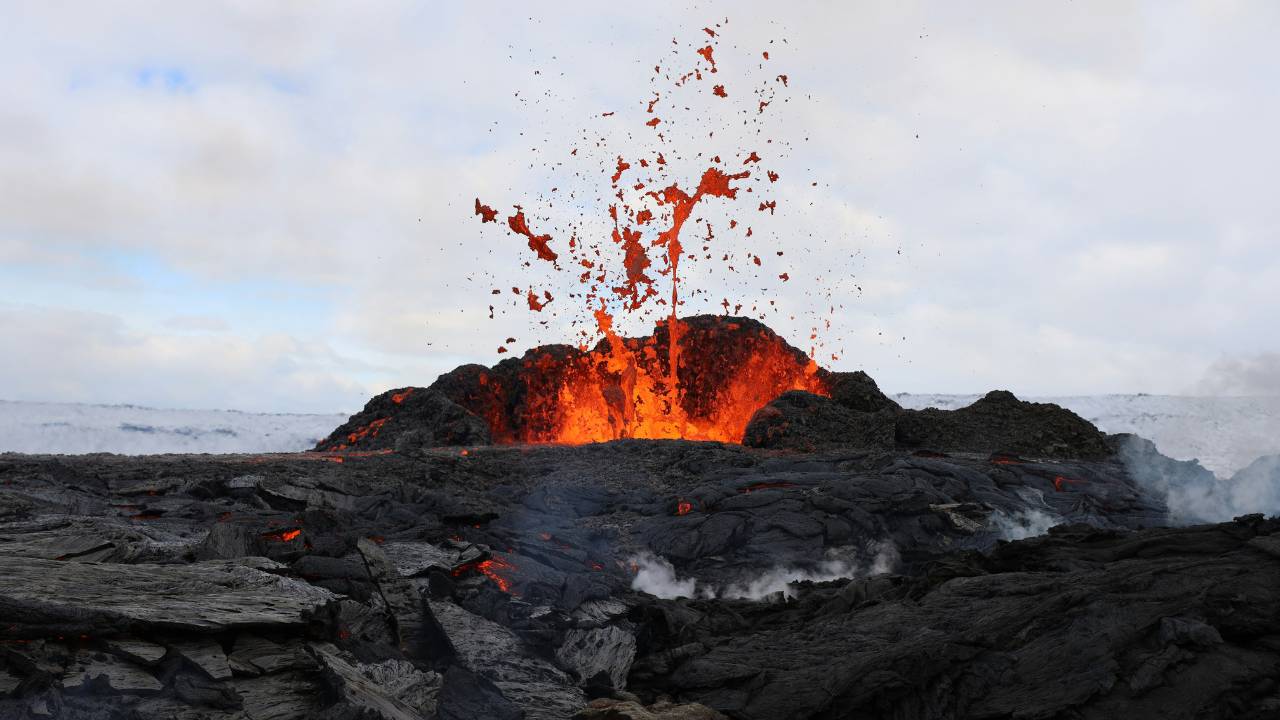
As you explore Iceland’s volcanic landscape, understanding the forces that shape it is essential. The country’s geological activity is a spectacle of nature, where the raw power of the Earth is on display.
Types of Eruptions
There are various types of eruptions, each with its characteristics and potential impacts on the surrounding landscape:
- Hawaiian: These eruptions are relatively gentle, with basaltic lava flows that can build shield volcanoes.
- Strombolian: Characterised by short-lived explosive bursts of lava, typically forming cinder cones.
- Vulcanian: More violent eruptions that generate ash clouds and pyroclastic flows.
- Plinian: The most explosive eruptions, which release large quantities of pumice, ash, and gas high into the atmosphere, creating extensive ash clouds.
Each type affects Iceland differently, from the creation of new land to the disruption of air travel due to ash clouds.
Magma and Lava
Magma and lava are key components of volcanic activity:
- Magma: This is molten rock beneath the Earth’s surface, containing dissolved gases and crystals. As it rises, the pressure decreases allowing the gas to form bubbles, contributing to the explosiveness of an eruption.
- Lava: Once magma reaches the Earth’s surface, it’s called lava. Lava flows can vary in speed and temperature, primarily based on their composition and eruption type.
These fiery substances shape Iceland’s unique geography, powering the island’s abundant geothermal energy resources. When you witness an erupting volcano, you are seeing magma transform into lava, creating the land before your eyes.
Famous Volcanoes of Iceland
In Iceland, you can experience the raw beauty of nature, and its volcanoes are true testimony to the island’s fiery heart. From the eruption of Eyjafjallajökull that halted air travel to the storied slopes of Hekla, read on to discover some of Iceland’s most renowned volcanic wonders.
Eyjafjallajökull and the 2010 Disruption
Eyjafjallajökull is perhaps the most famous volcano in Iceland for its 2010 eruption, which caused unprecedented disruption to international air travel. Nestled under a glacial ice cap, the volcano awoke in April 2010, spewing an ash cloud that travelled across Europe.
Grímsvötn and Bárðarbunga
Grímsvötn, Iceland’s most active volcano, is hidden beneath the Vatnajökull glacier. It last erupted in 2011, with its subglacial lake heating to produce massive steam explosions.
Bárðarbunga, another subglacial volcano in the Vatnajökull glacier region, is responsible for the largest volcanic eruption in Iceland’s recent history in 2014-2015. The area around it remains seismically active, hinting at the possibility of another eruption.
The Legend of Hekla
Hekla is an iconic stratovolcano with a history of eruptions dating back to 1104. Often called the ‘Gateway to Hell’, its unpredictable nature makes it both feared and respected. Hekla has erupted over 20 times since the Middle Ages, with its last major eruption occurring in 2000.
Iceland’s Geology and Volcano Formation
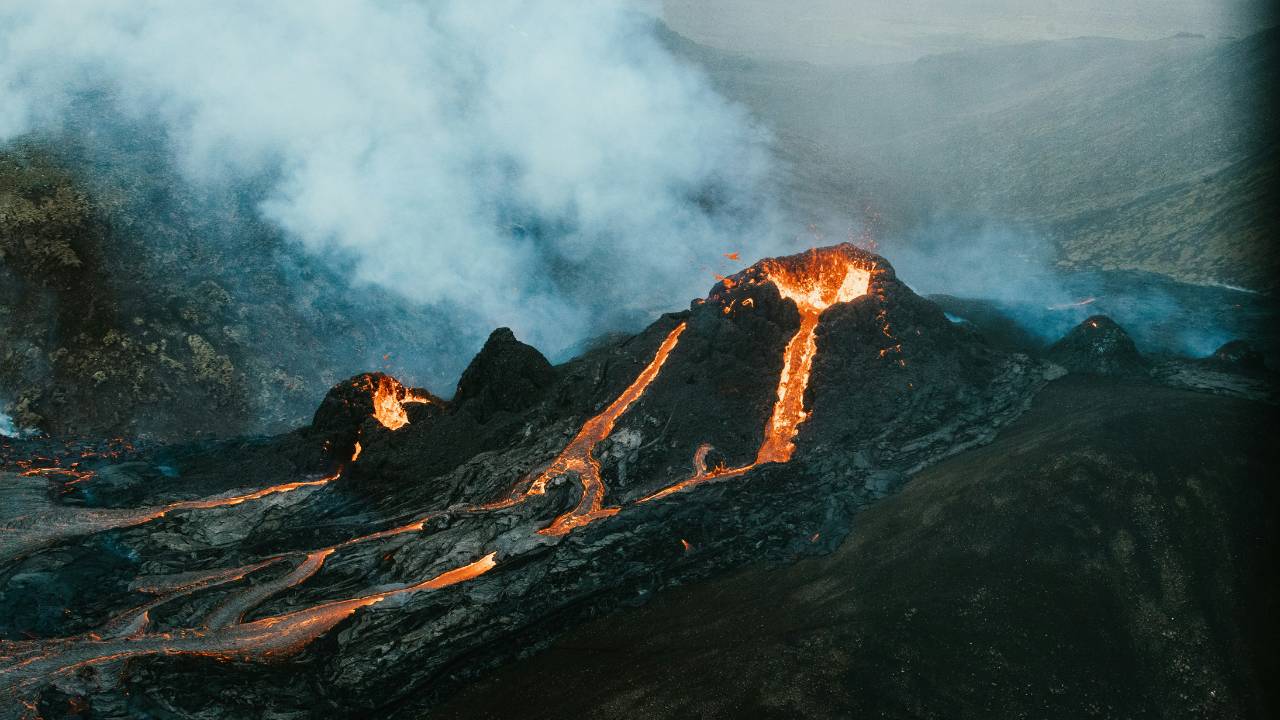
Iceland’s volcanic landscapes are born of a fiery genesis below your feet and shaped by powerful Earthly forces. Let’s explore the hotspots and tectonic movements that create this geothermal wonderland.
From Hotspot to Island
Beneath Iceland lies a geothermal hotspot, a plume of molten rock rising up from the Earth’s mantle. As it nears the surface, this magma often breaches the crust, resulting in the formation of volcanoes. Imagine a relentless forge beneath Earth’s surface, fashioning the very ground you stand on. The oldest rocks here, found in areas like Landmannalaugar, provide a window into this early volcanic activity and the island’s dramatic birth.
Tectonic Movements and Volcanism
Iceland is uniquely positioned on the Mid-Atlantic Ridge, where the North American tectonic plate and the Eurasian tectonic plate are slowly drifting apart. This tectonic boundary is a breeding ground for seismic activity and gives rise to the multitude of Iceland’s volcanic features. Here’s what this means for you:
- Active Volcanoes: The boundary between the tectonic plates is dotted with more than 30 active volcanic systems, continuing to sculpt the landscape around you.
- Different Volcano Types: Depending on the eruption style and lava composition, you’ll come across different volcano shapes:
- Shield Volcanoes: Characterised by broad, gentle slopes formed by fluid lava.
- Cone Volcanoes: Steeper and more explosive than shield types, they’re reminiscent of the classic volcano shape that often springs to mind.
- Landforms: Areas such as the sublime peaks and rhyolite mountains at Landmannalaugar have been shaped by centuries of tectonic and volcanic activity, creating a mosaic of exquisite geological features to discover.
Volcano Tourism and Safety
When exploring Iceland’s volcanoes, balancing your adventurous spirit with an emphasis on safety ensures an unforgettable experience. Familiarising yourself with the best times to visit and safety protocols is essential.
Best Times to Visit Volcanic Sites
Spring and Summer: The peak seasons for volcano tourism are between May and August. During these months, you’ll enjoy longer daylight hours and typically more favourable weather conditions.
- May to June: Ideal for witnessing vibrant landscapes with fewer tourists.
- July to August: Popular for warm weather and accessible highland roads.
Off-Peak Seasons: Visiting during the off-peak seasons (September to April) can be rewarding but comes with increased challenges such as colder temperatures and potential road closures.
Ensuring Safety During Visits
Guided Tours: To ensure your safety, consider booking guided tours, especially when visiting active or challenging sites. Experienced guides can provide:
- Essential safety information
- Updates on volcanic activity
- Insight into the geological history
Personal Safety Equipment:
- Sturdy Footwear: Always wear hiking boots with a good grip.
- Protective Gear: Helmets and masks may be required in areas with falling debris or gases.
Helicopter Tours: For a unique perspective, helicopter tours offer aerial views of volcanic landscapes, often with added safety and less physical strain.
Caution & Preparedness:
- Stay on marked paths.
- Check weather and volcanic activity reports before heading out.
- Be aware that conditions can change rapidly.
Impact of Volcanoes on Iceland
Volcanoes significantly affect your life in Iceland, from reshaping the environment to providing renewable energy sources.
Influence on Climate and Environment
Iceland’s volcanoes play a crucial role in your local climate and the environment. When a volcano erupts, it can emit an ash cloud that can reduce air quality and, in some cases, lead to the closure of airspace, affecting air travel. For instance, the 2010 eruption of Eyjafjallajökull caused widespread flight cancellations across Europe.
These eruptions also contribute to the formation and shaping of Iceland’s unique landscapes, such as lava fields and glaciers. The interaction between hot lava and ice can lead to jökulhlaups, which are glacial outburst floods, posing a risk to infrastructure but also contributing to the dynamic changes in your terrain.
- Ash cloud impacts:
- Air quality decrease
- Flight disruption
- Environmental transformations:
- Formation of lava fields
- Glacier interaction and jökulhlaups
Benefits to Energy and Economy
Your nation harnesses the geothermal activity from its numerous volcanoes to produce geothermal energy. This renewable energy source is pivotal for powering homes and businesses, significantly reducing reliance on fossil fuels.
The presence of hot springs and geysers has also turned into a tourist attraction, with locations like the Blue Lagoon being a prime example.
You’ll find that the volcanic soil is rich in minerals, promoting fertile grounds for agriculture, thus benefiting the local economy. Nevertheless, suppose a significant volcanic event occurs. In that case, there’s a trade-off between temporary economic setbacks, primarily in sectors like farming and tourism, and long-term natural resource advantages.
- Renewable energy production:
- Geothermal energy: powers homes, reduces fossil fuel use
- Economic boost through tourism:
- Prominent sites: Hot springs, geysers
In the short term, volcanic activity can cause disruptions, but the long-term benefits of geothermal energy and fertile soil are substantial for your economy.
For those looking to explore Iceland at their own pace, consider our exclusive 8 Night Iceland Self-Driving tour, which allows you to witness these volcanic wonders and more. Alternatively, our 3 Night Iceland Bronze Package offers a shorter but equally immersive experience, perfect for those with limited time.
Volcanic Events and Their Legacies
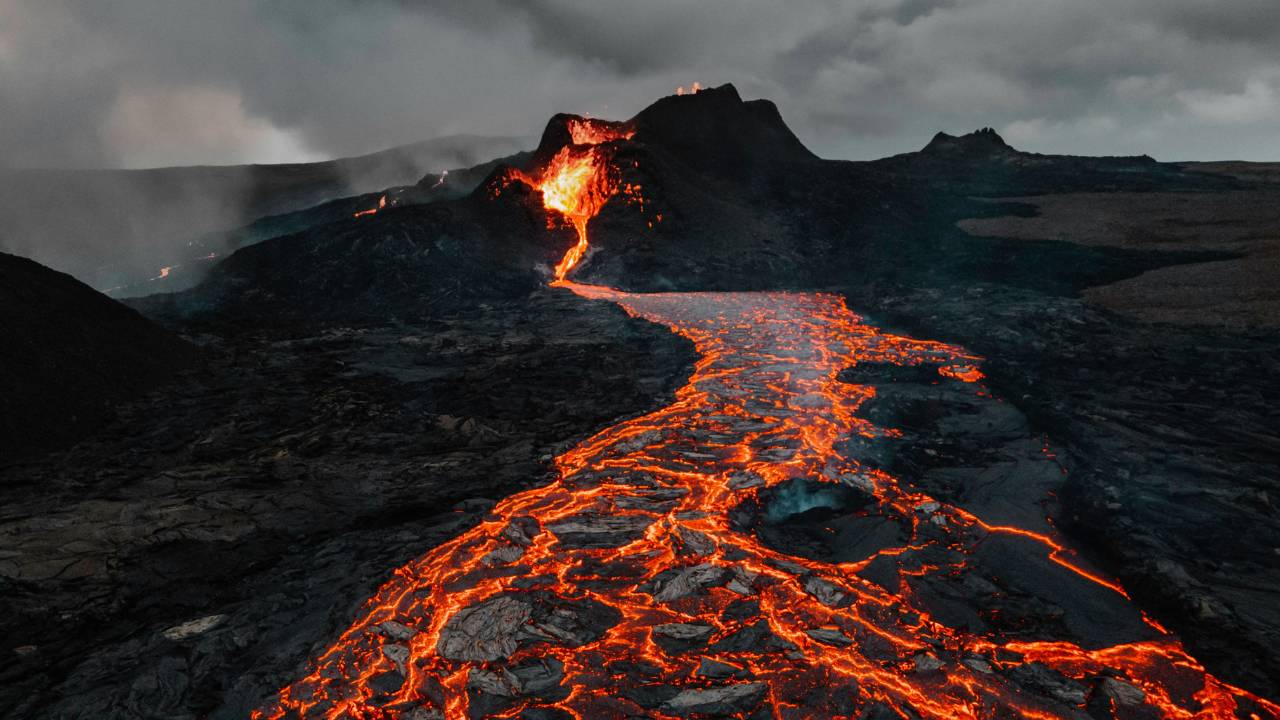
When you explore Iceland’s volcanic landscape, you’re witnessing the aftermath of colossal events that have shaped both the land and the scientific community.
Historic Eruptions and Their Effects
The 1783 Laki fissure eruption remains one of Iceland’s most historic events. The eruption spewed enormous quantities of volcanic ash into the atmosphere, causing climate anomalies across the Northern Hemisphere. This event demonstrates the wide-reaching impact of Iceland’s volcanic activity, which isn’t confined to its own shores.
- Eldfell on Heimaey: The 1973 eruption forced the entire population to flee overnight. The town was buried in ash and lava, yet remarkably rebuilt. It’s a testament to the resilience of the Icelandic people.
- Surtsey: Birthed from the sea in 1963, this island created by a volcanic eruption is a UNESCO World Heritage site, offering scientists a pristine natural laboratory to study colonisation by plant and animal life.
Volcanology and Research
Iceland’s terrain is dotted with volcanic mountains, from stratovolcanoes to unique shield volcanoes. Each eruption gives scientists a chance to learn more about volcanic behaviour.
- Stratovolcanoes are typically cone-shaped and explosive, found in places like the Reykjanes Peninsula, not far from Reykjavik. Their eruptions provide insights into seismic activity.
- Shield volcanoes, with their gentle slopes, create the vast highlands of Iceland. Their lava flows reveal much about the inner workings of the Earth.
Your appreciation for Iceland’s volcanic legacy will deepen with every step you take across this dynamic landscape.
